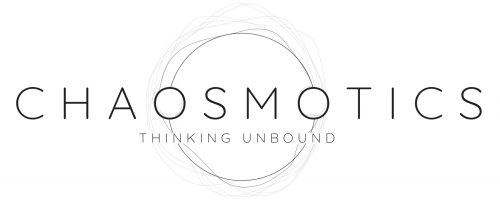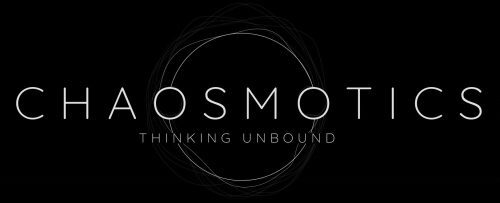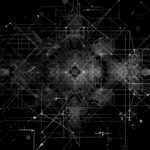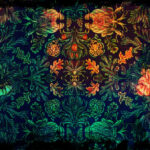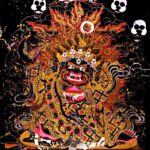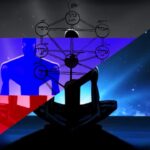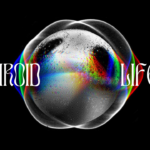Here for Part 1
Original in The Art of Anthropology, A. Gell, E. Hirsch ed., Routledge, London, 1999
Alfred Gell (1945-1997) was a peculiar thinker, one who contributed toward the development of the recursive, or ontological, turn in anthropology. Gell’s anthropology of art refuses from the outset to be an aesthetic theory, while attempting rather to embody different, non-strictly Western perspectives, such as animism, to consider the notion of the (art) object. In this landscape, particularly in Art and Agency, his main work, Gell ends up with an theory that begins to not be only anthropological but a grotesque hybrid of anthropology, philosophy, and cybernetics, one where the art object and its affects exist in a complex array of abducted energetic structures that distribute themselves across space and time. The essay, here republished, anticipates the conceptual premises of Art and Agency, focusing on the understanding of art objects between the two poles of Technology and Magic, which for Gell the latter is the grade zero of the former: a perfect idea from which partial pulsations derive.
_________________________________________
5. The Fundamental Scheme Transfer between Art Production and Social Process
But let us focus our attention on art production in societies without traditions and institutions of ‘fine art’ of the kind which nurtured Picasso and Duchamp.
In such societies art arises particularly in two domains. The first of these is ritual, especially political ritual. Art objects are produced in order to be displayed on those occasions when political power is being legitimized by association with various supernatural forces. Secondly, art objects are produced in the context of ceremonial or commercial exchange. Artistry is lavished on objects which are to be transacted in the most prestigious spheres of exchange, or which are intended to realize high prices at market. The kind of technical sophistication involved is not the technology of illusionism but the technology of the radical transformation of materials, in the sense that the value of works of art is conditioned by the fact that it is difficult to get from the materials of which they are composed to the finished product. If we take up the example of the Trobriand canoe-board once more, it is clear that it is very difficult to acquire the art of transforming the root-buttress of an ironwood tree, using the rather limited tools which the Trobrianders have at their disposal, into such a smooth and refined finished product. If these boards could be simply cast in some plastic material, they would not have the same potency, even though they might be visually identical. But it is also clear that in the definition of technical virtuosity must be included considerations which might be thought to belong to aesthetics.
Let us consider the position of a Trobriand carver, commissioned to add one more to the existing corpus of canoe-boards. The carver does not only have the problem of physically shaping rather recalcitrant material with inadequate tools: the problem is also one of visualizing the design which he mentally follows in carving, a design which must reflect the aesthetic criteria appropriate to this art genre. He must exercise a faculty of aesthetic judge-ment, one might suppose, but this is not actually how it appears to the artist in the Trobriands who carves within a cultural context in which originality is not valued for its own sake, and who is supposed by his audience, and himself, to follow an ideal template for a canoe-board, the most magically efficacious one, the one belonging to his school of carving and its associated magical spells and rites. The Trobriand carver does not set out to create a new type of canoe-board, but a new token of an existing type; so he is not seeking to be original, but, on the other hand, he does not approach the task of carving as merely a challenge to his skill with the materials, seeing it, instead, primarily as a challenge to his mental powers. Perhaps the closest analogy would be with a musician in our culture getting technically prepared to give a perfect performance of an already existing composition, such as the Moonlight Sonata.
Carvers undergo magical procedures which open up the channels of their minds so that the forms to be inscribed on the canoe-board will flow freely both in and out. Campbell, in an unpublished study of Trobriand (Vakuta) carving (1984), records that the final rite of carving initiation is the ingestion of the blood of a snake famed for its slipperiness. Throughout the initiation the emphasis is placed on ensuring free flow (of magical knowledge, forms, lines, and so on) by means of the metaphoric use of water and other liquids, especially blood and bespelled betel-juice. It is, of course, true that the Melanesian curvilinear carving style is dominated by an aesthetic of sinuous lines, well-represented in the canoe-board itself; but what for us is an aesthetic principle, one which we appreciate in the finished work, is from the carver’s point of view a series of technical difficulties (or blockages of the flow) which he must overcome in order to carve well. In fact, one of the carver’s initiatory rites represents just this: the master carver makes a little dam, behind which sea-water is trapped. After some magical to-do, the dam is broken and the water races back to the sea. After this, the initiate’s mind will become quick and clear, and carving ideas will flow in similarly unimpeded fashion into his head, down his arms, out through his fingers, and into the wood. We see here that the ability to internalize the carving style, to think up the appropriate forms, is regarded as a matter of the acquisition of a kind of technical facility, inseparable from the kind of technical facility which has to be mastered in order for these imagined forms to be realized in wood.
Trobriand carving magic is technical-facility magic. The imaginative aspect of the art and the tool-wielding aspect of the art are one and the same. But there is a more important point to be made here about the magical significance of the art and the close relationship between this magical significance and its technical characteristics. It will be recalled that these boards are placed on Kula canoes, their purpose being to induce the Kula partners of the Trobrianders to disgorge their best valuables, without holding any back, in the most expeditious fashion.
Moreover, these and the other carved components of the Kula canoe (the prow-board, and the wash-board along the side) have the additional purpose of causing the canoe to travel swiftly through the water, as far as possible like the original flying canoe of Kula mythology: Campbell, in her iconographic analysis of the motifs found on the carved components of canoes, is able to show convincingly that slipperiness, swift movement, and a quality glossed as ‘wisdom’ are the characteristics of the real and imaginary animals represented, often by a single feature, in the canoe art.
A wise’ animal, for instance, is the osprey, an omnipresent motif: the osprey is wise because it knows when to strike for fish, and captures them with unerring precision. It is the smooth, precise efficiency of the osprey’s fish-getting technique which qualifies it to be considered wise, not the fact that it is knowledgeable. The same smooth and efficacious quality is desired for the Kula expedition. Other animals, such as butterflies and horseshoe bats, evoke swift movement, lightness, and similar ideas. Also represented are waves, water, and so on.
The success of the Kula, like the success of the carving, depends on unimpeded flow. A complex series of homologies, of what Bourdieu (1977) has called ‘scheme transfers’, exists between the process of overcoming the technical obstacles which stand in the way of the achievement of a perfect ‘performance’ of the canoe-board carving and the overcoming of the technical obstacles, as much psychic as physical, which stand in the way of the achievement of a successful Kula expedition. Just as carving ideas must be made to flow smoothly into the carver’s mind and out through his fingers, so the Kula valuables have to be made to flow smoothly through the channels of exchange, without encountering obstructions. And the metaphoric imagery of flowing water, slippery snakes, and fluttering butterflies applies in both domains, as we have seen.
We saw earlier that it would be incorrect to interpret the canoe-board ethologically as an eye-spot design or, from the standpoint of the psychology of visual perception, as a visually unstable figure, not because it is not either of these things (it is both) but because to do so would be to lose sight of its most essential characteristic, namely, that it is an object which has been made in a particular way. That is, it is not the eye-spots or the visual instabilities which fascinate, but the fact that it lies within the artist’s power to make things which produce these striking effects. We can now see that the technical activity which goes into the production of a canoe-board is not only the source of its prestige as an object, but also the source of its efficacy in the domain of social relations; that is to say, there is a fundamental scheme transfer, applicable, I suggest, in all domains of art production, between technical processes involved in the creation of a work of art and the production of social relations via art. In other words, there exists a homology between the technical processes involved in art, and technical processes generally, each being seen in the light of the other, as, in this instance, the technical process of creating a canoe-board is homologous to the technical processes involved in successful Kula operations. We are inclined to deny this only because we are inclined to play down the significance of the technical domain in our culture, despite being utterly dependent on technology in every department of life. Technique is supposed to be dull and mechanical, actually opposed to true creativity and authentic values of the kind art is supposed to represent. But this distorted vision is a by-product of the quasi-religious status of art in our culture, and the fact that the art cult, like all other cults, is under a stringent requirement to conceal its real origins, as far as possible.
6. The Enchantment of Technology: Magic and Technical Efficacy
But just pointing to the homology between the technical aspect of art production and the production of social relations is insufficient in itself, unless we can arrive at a better understanding of the relation between art and magic, which in the case of Trobriand canoe art is explicit and fundamental. It is on the nature of magical thought, and its relation to technical activity, including the technical activity involved in the production of works of art, that I want to focus in the last part of this essay.
Art production and the production of social relations are linked by a fundamental homology: but what are social relations? Social relations are the relations which are generated by the technical processes of which society at large can be said to consist, that is, broadly, the technical processes of the production of subsistence and other goods, and the production (reproduction) of human beings by domesticating them and breeding them. Therefore, in identifying a homology between the technical processes of art production and the production of social relations, I am not trying to say that the technology of art is homologous to a domain which is not, itself, technological, for social relations are themselves emergent characteristics of the technical base on which society rests. But it would be misleading to suggest that, because societies rest on a technical base, technology is a cut-and-dried affair which everybody concerned understands perfectly.
Let us take the relatively uncontentious kind of technical activity involved in gardening—uncontentious in that everybody would admit this is technical activity, an admission they might not make if we were talking about the processes involved in setting up a marriage. Three things stand out when one considers the technical activity of gardening: firstly, that it involves knowledge and skill, secondly, that it involves work, and thirdly, that it is attended by an uncertain outcome, and moreover depends on ill-understood processes of nature. Conventional wisdom would suggest that what makes gardening count as a technical activity is the aspect of gardening which is demanding of knowledge, skill, and work, and that the aspect of gardening which causes it to be attended with magical rites, in pre-scientific societies, is the third one, that is, its uncertain outcome and ill-understood scientific basis.
But I do not think things are as simple as that. The idea of magic as an accompaniment to uncertainty does not mean that it is opposed to knowledge, ie. that where there is knowledge there is no uncertainty, and hence no magic. On the contrary, what is uncertain is not the world but the knowledge we have about it. One way or another, the garden is going to turn out as it turns out; our problem is that we don’t yet know how that will be. All we have are certain more-or-less hedged beliefs about a spectrum of possible outcomes, the more desirable of which we will try to bring about by following procedures in which we have a certain degree of belief, but which could equally well be wrong, or inappropriate in the circumstances. The problem of uncertainty is, therefore, not opposed to the notion of knowledge and the pursuit of rational technical solutions to technical problems, but is inherently a part of it. If we consider that the magical attitude is a by-product of uncertainty, we are thereby committed also to the proposition that the magical attitude is a by-product of the rational pursuit of technical objectives using technical means.
7. Magic as the Ideal Technology
But the relationship between technical processes and magic does not only come about because the outcome of technical endeavours is doubtful and results from the action of forces in nature of which we are partially or wholly ignorant. Work itself, mere labour, calls into being a magical attitude, because labour is the subjective cost incurred by us in the process of putting techniques into action. If we return to Simmel’s ideas that “value” is a function of the resistance which has to be overcome in order to gain access to an object, then we can see that this “resistance” or difficulty of access can take two forms:
(i) the object in question can be difficult to obtain, because it has a high price at market or because it belongs to an exalted sphere of exchange; or (ii) the object can be difficult to obtain because it is hard to produce, requiring a complex and chancy technical process, and/or a technical procedure which has high subjective opportunity costs, i.e. the producer is obliged to spend a great deal of time and energy producing that particular product, at the expense of other things he might produce or the employment of his time and resources in more subjectively agreeable leisure activities. The notion of work is the standard we use to measure the opportunity cost of activities such as gardening, which are engaged in, not for their own sake, but to secure something else, such as an eventual harvest. In one sense, gardening for a Trobriander has no opportunity cost, because there is little else that a Trobriander could conceivably be doing. But gardening is still subjectively burdensome, and the harvest is still valuable because it is difficult to obtain.
Gardening has an opportunity cost in the sense that gardening might be less laborious and more certain in its outcome than it actually is. The standard for computing the value of a harvest is the opportunity cost of oftaining the resulting harvest, not by the technical, work-demanding means that are actually employed, but effortlessly, by magic. All productive activities are measured against the magic-standard, the possibility that the same product might be produced effordessly, and the relative efficacy of techniques is a function of the extent to which they converge towards the magic-standard of zero work for the same product, just as the value to us of objects in the market is a function of the relation between the desirability of obtaining those objects at zero opportunity cost (alternative purchases forgone) and the opportunity costs we will actually incur by purchasing at the market price.
If there is any truth in this idea, then we can see that the notion of magic, as a means of securing a product without the work-cost that it actually entails, using the prevailing technical means, is actually built into the standard evaluation which is applied to the efficacy of techniques, and to the computation of the value of the product. Magic is the baseline against which the concept of work as a cost takes shape. Actual Kula canoes (which have to be sailed, hazardously, laboriously, and slowly, between islands in the Kula ring) are evaluated against the standard set by the mythical flying canoe, which achieves the same results instantly, effortlessly, and without any of the normal hazards.
In the same way, Trobriand gardening takes place against the background provided by the litanies of the garden magician, in which all the normal obstacles to successful gardening are made absent by the magical power of words. Magic haunts technical activity like a shadow; or, rather, magic is the negative contour of work, just as, in Saussurean linguistics, the value of a concept (say, “dog”) is a function of the negative contour of the surrounding concepts (“cat”, “wolf”, “master”).
Just as money is the ideal means of exchange, magic is the ideal means of technical production. And just as money values pervade the world of com-modities, so that it is impossible to think of an object without thinking at the same time of its market price, so magic, as the ideal technology, pervades the technical domain in pre-scientific societies1.
It may not be very apparent what all this has got to do with the subject of primitive art. What I want to suggest is that magical technology is the reverse side of productive technology, and that this magical technology consists of representing the technical domain in enchanted form. If we return to the idea, expressed earlier, that what really characterizes art objects is the way in which they tend to transcend the technical schemas of the spectator, his normal sense of self-possession, then we can see that there is a convergence between the characteristics of objects produced through the enchanted technology of art and objects produced via the enchanted technology of magic, and that, in fact, these categories tend to coincide. It is often the case that art objects are regarded as transcending the technical schemas of their creators, as well as those of mere spectators, as when the art object is considered to arise, not from the activities of the individual physically responsible for it, but from the divine inspiration or ancestral spirit with which he is filled. We can see signs of this in the fact that artists are not paid for working’ for us, in the sense in which we pay plumbers for doing so. The artists’ remuneration is not remuneration for his sweat, any more than the coins placed in the offertory plate at church are payments to the vicar for his praying on behalf of our souls. If artists are paid at all, which is infrequently, it is as a tribute to their moral ascendancy over the lay public, and such payments mostly come from public bodies or individuals acting out the public role of patrons of the arts, not from selfishly motivated individual consumers. The artist’s ambiguous position, half-technician and half-mystagogue, places him at a disadvantage in societies such as ours, which are dominated by impersonal market values. But these disadvantages do not arise in societies such as the Trobriands, where all activities are simultaneously technical procedures and bound up with magic, and there is an insensible transition between the mundane activity which is necessitated by the requirements of subsistence production and the most overly magico-religious performances.
8. The Trobriand Garden as a Collective Work of Art
The interpenetration of technical productive activity, magic, and art, is wonderfully documented in Malinowski’s Coral Gardens and Their Magic (1935). Malinowski describes the extraordinary precision with which Trobriand gardens, having been cleared of scrub, and not only scrub, but the least blade of grass, are meticulously laid out in squares, with special structures called ‘magical prisms’ at each corner, according to a symmetrical pattern which has nothing to do with technical efficiency, and everything to do with achieving the transcendence of technical production and a convergence towards magical production. Only if the garden looks right will it grow well, and the garden is, in fact, an enormous collective work of art. Indeed, if we thought of the quadrangular Trobriand garden as an artist’s canvas on which forms mysteriously grow, through an occult process which lies partly beyond our intuition, that would not be a bad analogy, because that is what happens as the yams proliferate and grow, their vines and tendrils carefully trained up poles according to principles which are no less ‘aesthetic’ than those of the topiarist in the formal gardens of Europe2.
The Trobriand garden is, therefore, both the outcome of a certain system of technical knowledge and at the same time a collective work of art, which produces yams by magic. The mundane responsibility for this collective work of art is shared by all the gardeners, but on the garden magician and his associates more onerous duties are imposed. We would not normally think of the garden magician as an artist, but from the point of view of the categories operated by the Trobrianders, his position is exactly the same, with regard to the production of the harvest, as the carver’s position is with regard to the canoe-board, ie. he is the person magically responsible, via his ancestrally inherited sopi or magical essence.
The garden magician’s means are not physical ones, like the carver’s skill with wood and tools, except that it is he who lays out the garden originally and constructs (with a good deal of effort, we are told) the magic prisms at the corners. His art is exercised through his speech. He is master of the verbal poetic art, just as the carver is master of the use of visual metaphoric forms (ospreys, butterflies, waves, and so on). It would take too long, and introduce too many fresh difficulties, to deal adequately with the tripartite relationship between language (the most fundamental of all technologies), art, and magic.
But I think it is necessary, even so, to point out the elementary fact that Trobriand spells are poems, using all the usual devices of prosody and metaphor, about ideal gardens and ideally efficacious gardening techniques.
Malinowski (1935: i. 169) gives the following (Formula 27):
I
Dolphin here now, dolphin here ever!
Dolphin here now, dolphin here ever!
Dolphin of the south-east, dolphin of the north-west.
Play on the south-east, play on the north-west, the dolphin plays! The dolphin plays!
II
The dolphin plays!
About my kaysalu, my branching support, the dolphin plays.
About my kaybudi, my training stick that leans, the dolphin plays.
About my kamtya, my stem saved from the cutting, the dolphin plays.
About my tala, my partition stick, the dolphin plays.
About my yeye’i, my small slender support, the dolphin plays.
About my tamkaluma, my light yam pole, the dolphin plays.
About my kavatam, my strong yam pole, the dolphin plays.
About my kayvaliluma, my great yam pole, the dolphin plays.
About my tukulumwala, my boundary line, the dolphin plays.
About my karivisi, my boundary triangle, the dolphin plays.
About my kamkokola, my magical prism, the dolphin plays.
About my kaynutatala, my uncharmed prisms, the dolphin plays.
III
The belly of my garden leavens,
The belly of my garden rises,
The belly of my garden reclines,
The belly of my garden grows to the size of a bush hen’s nest,
The belly of my garden grows like an ant-hill,
The belly of my garden rises and is bowed down,
The belly of my garden rises like the iron-wood palm,
The belly of my garden lies down,
The belly of my garden swells,
The belly of my garden swells as with a child.
and comments (1935: ii. 310-11):
the invocation of the dolphin… transforms, by a daring simile, the Trobriand garden, with its foliage swaying and waving in the wind, into a seascape… Bagido’u [the magician] explained to me… that as among the waves the dolphin goes in and out, up and down, so throughout the garden the rich garlands at harvest will wind over and under, in and out, of the supports.
It is clear that not only is this hymn to superabundant foliage animated by the poetic devices of metaphor, antithesis, arcane words, and so on, all meticulously analysed by Malinowski, but that it is also tightly integrated with the catalogue of sticks and poles made use of in the garden, and the ritually important constructions, the magic prisms and boundary triangles which are also found there. The garden magician’s technology of enchantment is the reflex of the enchantment of technology. Technology is enchanted because the ordinary technical means employed in the garden point inexorably towards magic, and also towards art, in that art is the idealized form of production. Just as when, confronted with some masterpiece, we are fascinated because we are essentially at a loss to explain how such an object comes to exist in the world, the litanies of the garden magician express the fascination of the Trobrianders with the efficacy of their actual technology which, converging towards the magical ideal, adumbrates this ideal in the real world.
References
- BERGER, PETER (1967). The Social Reality of Religion. Harmondsworth, Middx.: Penguin.
- BLOCH, MAURICE (1974). ‘Symbols, Song, Dance, and Features of Articulation: Is Religion an Extreme Form of Traditional Authority?’, Archives Européennes de Sociologie, 15/1: 55-81.
- BOURDIEU, PIERRE (1968). ‘Outline of a Sociological Theory of Art Perception’, International Social Science Journal, 20/4: 589-612.
- ____(1977). Outline of a Theory of Practice. Cambridge: Cambridge Univ. Press.
- CAMPBELL, SHIRLEY (1984). ‘The Art of the Kula’. Ph.D. thesis, Australian National Univ., Canberra.
- FORGE, ANTHONY (1966). ‘Art and Environment in the Sepik’, Proceedings of the Royal Anthropological Institute for 1965. London: Royal Anthropological Institute, 23-31.
- LEACH, JERRY W., and LEACH, EDMUND (1983). The Kula: New Perspectives on Massim Exchange. Cambridge: Cambridge Univ. Press.
- MALINOWSKI, BRONISLAW (1922). Argonauts of the Western Pacific: An Account of Native Enterprise and Adventure in the Archipelagoes of Melanesian New Guinea. London: Routledge.
- ____ (1935). Coral Gardens and their Magic: A Study of the Methods of Tilling the Soil and of Agricultural Rites in the Trobriand Islands. 2 vols. London: Allen & Unwin.
- MUNN, NANcY (1986). The Fame of Gawa: A Symbolic Study of Value Transformation in a Massim (Papua New Guinea) Society. Cambridge: Cambridge Univ. Press.
- PANOFSKY, ERWIN (1962). Studies in Iconology: Humanistic Themes in the Art of the Renaissance. New York: Harper & Row.
- SIMMEL, GEORG (1979). The Philosophy of Money. Boston: Routledge & Kegan Paul.
____________________________________________
- In technologically advanced societies where different technical strategies exist, rather than societies like the Trobriands where only one kind of technology is known or practicable, the situation is different, because different technical strategies are opposed to one another, rather than being opposed to the magic-standard. But the technological dilemmas of modern societies can, in fact, be traced to the pursuit of a chimera which is actually the equivalent of the magic-standard: ideal ‘costless’ production. This is actually not costless at all, but the minimization of costs to the corporation by the maximization of social costs which do not appear on the balance sheet, leading to technically generated unemployment, depletion of unrenewable resources, degradation of the environment, etc.
- In the Sepik, likewise, the growing of Jong yams is an art-form, and not just metaphorically, because the long yam can be induced to grow in particular directions by careful manipulation of the surrounding soil: it is actually a form of vegetable sculpture (see Forge, 1966).
